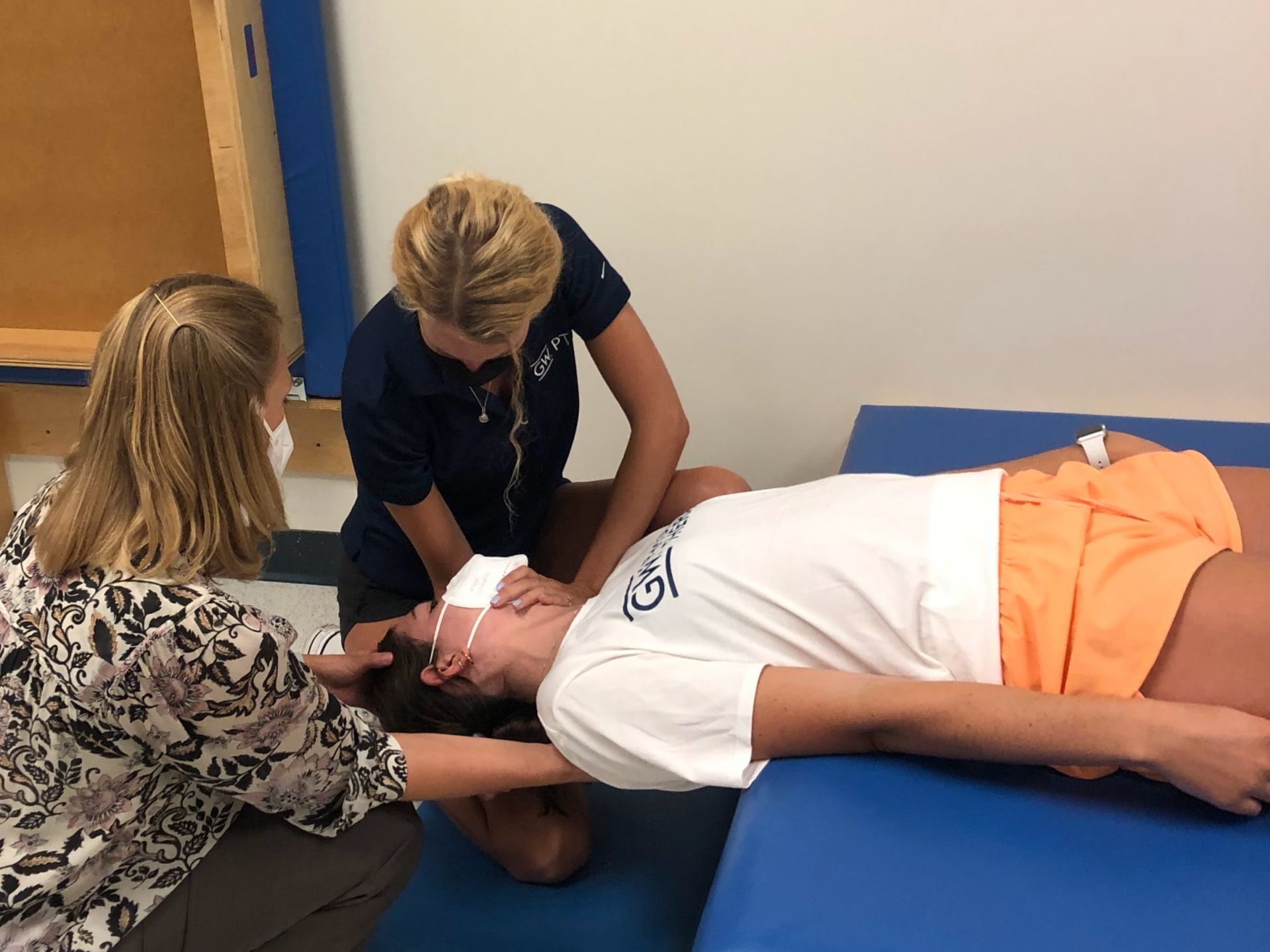Current Funding
Honey W. Nashman Center for Civic Engagement and Public Service: Faculty Development Grant
Research Focus Areas:
Are You Good At Multi-Tasking?
We are investigating the effects of performing simultaneous tasks (multi-tasking) on movement accuracy. You will be asked to perform a game-like marching task while performing counting task at the same time. We are currently seeking right-handed, healthy adults from the age of 18-85.
Faculty Involved: Dr. Keith Cole and Dr. Karen Goodman
Dose of Gaze Stabilization Exercises Required for Clinical Improvement
Vestibular rehabilitation includes use of gaze stabilization exercises to improve symptoms of imbalance and dizziness. This study seeks to determine the optimal dose and dosage of exercise that is required to achieve clinical improvements in individuals with vestibular hypofunction or concussion. In this study, we will use a wireless virtual reality device to measure key parameters of dose and dosage and response to exercise. We also seek to compare vestibular exercises performed in a virtual reality device to standard exercises, and compare exercise performance outcomes to healthy controls without vestibular disorders.
Faculty Involved: Dr. Karen Goodman and Dr. Keith Cole
Use of Inertial Measurement Units to Determine Gait Characteristics and Head Movements
This study aims to investigate a unique placement of inertial measurement units (IMU) to determine whether the devices can detect changes in walking characteristics and head motions in healthy individuals and individuals with visually induced vertigo. If successful, this would allow researchers to collect data from individuals in real-world environments, such as their home and community, using these devices. This would provide an objective measure, beyond self-report, of how individuals with visually induced vertigo perform tasks involving head movements and mobility.
Faculty Involved: Dr. Keith Cole and Dr. Karen Goodman
Clinical pain mechanism assessment by physical therapists in the United States: a cross-sectional survey analysis
Researchers often use a number of tests to better understand how individuals process pain. In recent years there has been a trend in research to understand the main mechanisms of pain at fault, in attempts to better target pain management strategies. However, researchers are infrequently treating pain as compared to clinicians, so it is necessary to understand how clinicians are evaluating pain. This survey study intends to evaluate current practice trends of physical therapists who treat pain, specifically how they assess the pain mechanisms at fault and contributing factors to pain.
Faculty Involved: Dr. Dhinu Jayaseelan
Pressure Pain Threshold Validation
Pain is the most common reason why individuals seek physical therapy services. Current methods of evaluating and measuring pain rely largely on patient report. Patient report can be variable, biased, and offers little insight to source of increased pain; thus offering little guidance for the clinician’s treatment approach. Emerging evidence suggests that pain pathways may be more sensitive in persons with chronic pain, however objectifying pain sensitivity is challenging in the clinic. Expensive pressure algometers measure pain thresholds in the research setting and are not widely used by clinicians. Hand-held dynamometers, instruments that measure force, however, are readily available in the clinic and may allow the opportunity to easily measure pain thresholds. We aim to validate the dynamometer for this purpose, providing another outcome measure in the clinic to measure the primary or contributing factors to a person’s pain experience.
Faculty Involved: Dr. Dhinu Jayaseelan and Dr. Keith Cole
Wearable Sensors and AI to Recognize and Evaluate IADLs
blurb here on R21 grant
Cross-Disciplinary Examination of a Novel Weight-Bearing Dual-Task Intervention in Older Adults
Focuses on investigating the effects of an 8-week dual-task intervention of performing prescribed simultaneous cognitive and physical tasks. Outcome measured used will determine changes in functional movement capacity, cognition, and overall brain function. It is vital to be able to perform motor and cognitive tasks simultaneously in order to functionally move through one’s community. We aim to address both cognitive (psychology) and movement (physical therapy) changes during aging to prevent declines in functional mobility, and to better understand functioning in a real-work busy environment.
Potential Subjects
Please contact us about participating in a research project: nmclab [at] gwu [dot] edu (nmclab[at]gwu[dot]edu)
